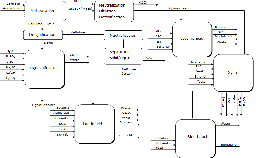
Lorena Pedraza
Universidad Iberoamericana, Mexico
Title: Convenient product distribution for a lignocellulosic biorefinery: optimization through sustainable indexes
Biography
Biography: Lorena Pedraza
Abstract
Lignocellulosic biomass can be employed to generate diverse chemicals, even though it has been mainly used as fuel. In Mexico, the main source of lignocellulosic materials are agricultural wastes, for example, residues obtained from corn, which is the main agricultural product in the country. Although corn stover is employed as animal feed and corn cob as fuel in rural communities, both residues are underused, which boosts their accumulation as wastes. It is estimated that 4 million tons of corn cob were generated in
2016. Such residue was proposed as raw material in a biorefinery for production of bioethanol, enhancing its applications and decreasing pollution derived from its accumulation. Nevertheless, the preliminary techno- economic analysis showed that the project was not feasible; therefore, generating diverse chemicals like lactic acid, succinic acid, xylitol and lignosulfonates, was considered. These products were selected according to their demand in the country. A multi objective optimization approach was employed to find an optimal product distribution for the biorefinery shown in Figure 1 that cope with economic (EPI), environmental (RSEI) and safety (SI) indexes. Through this strategy, an efficient solution with an EPI of 0.16 is achieved, generating an annual utility of 70 kUSD when xylitol and bioethanol production are favored over succinic acid and lactic acid. This tool can be applied with different feedstocks and products in a biorefinery scheme, with kinetic and yield data for corresponding processes.

Recent Publications
1. K. Fredga, K. Mäler (2010) Life Cycle Analyses and Resource
Assessments. Ambio. 39:36â€41.
2. L. Pedraza, A. Flores, H. Toribio, R. Quintero R, S. Le Borgne, C.
Mossâ€Acosta, A. Martinez (2016) Sequential Thermochemical Hydrolysis of Corncobs and Enzymatic Saccharification of the Whole Slurry Followed by Fermentation of Solubilized Sugars to Ethanol with the Ethanologenic Strain Escherichia coli MS04
BioEnergy Res. 9:1046â€1052.
3. G. J. Ruizâ€Mercado, R. L. Smith, M. A. Gonzalez (2012) Sustainability indicators for chemical processes: I. Taxonomy. Industrial & Engineering Chemistry Research. 51:2309â€2328
4. S Mussatto, J. Moncada, I Roberto, C Cardona (2013) Techno†economic analysis for brewer’s spent grains use on a biorefinery concept: The Brazilian case. Bioresource Technology. 148:302â€310.
5. Q Li, D Wang, Y Wu, W Li, Y Zhang, J Xing, Z Su (2011) One step recovery of succinic acid from fermentation broths by crystallization. Separation and Purification Technology. 72(3):294â€
300.

